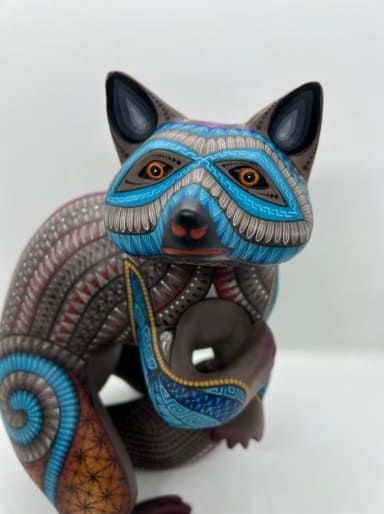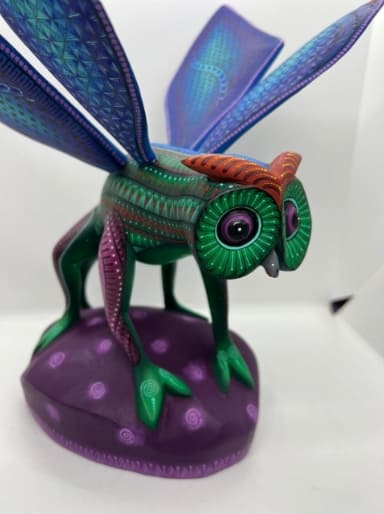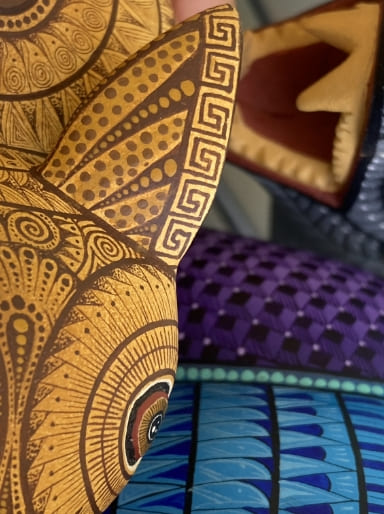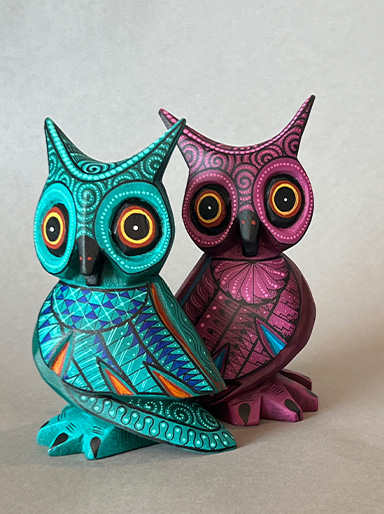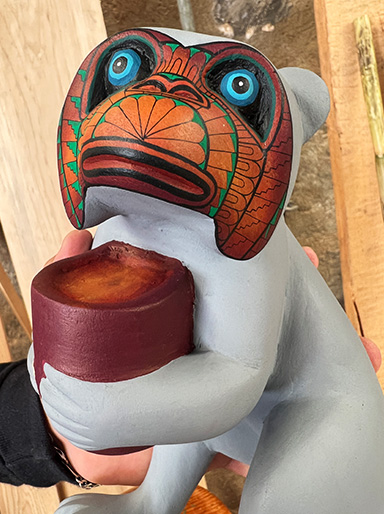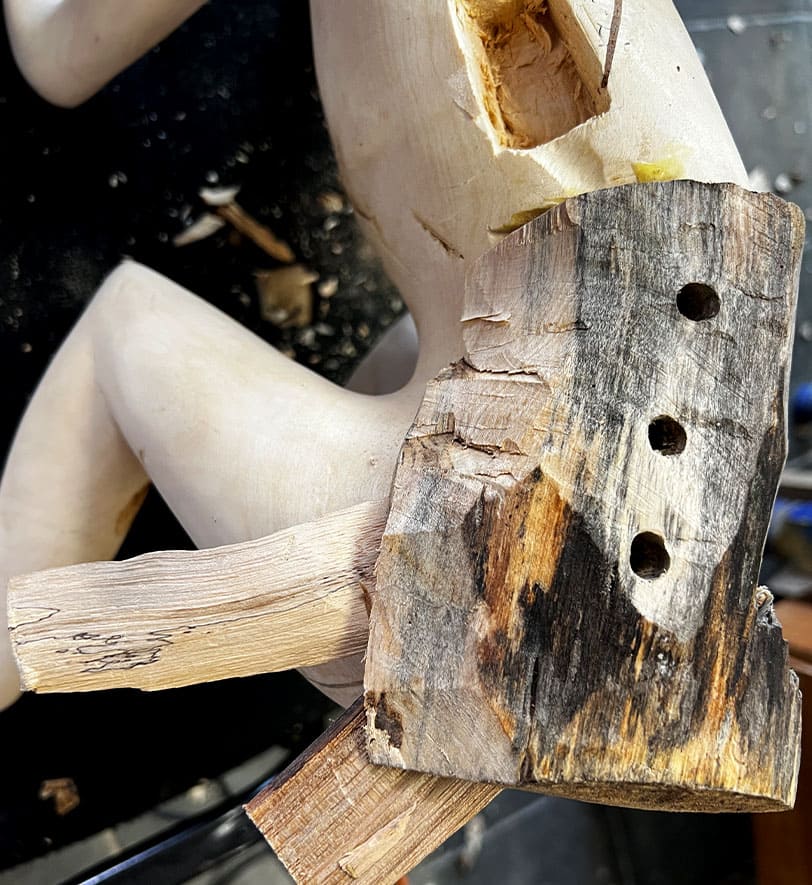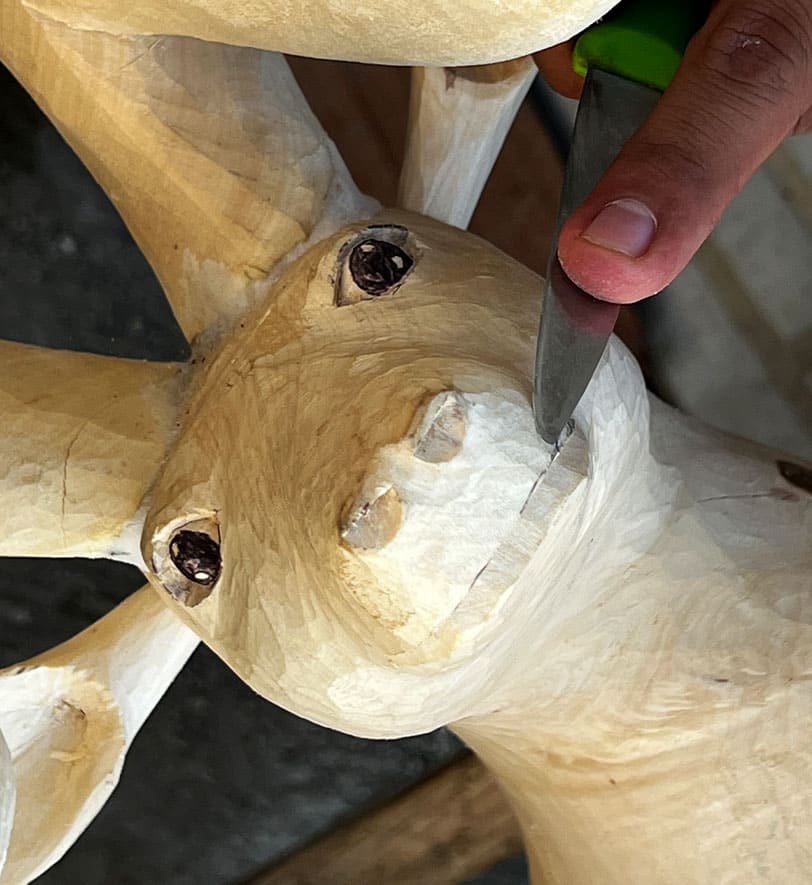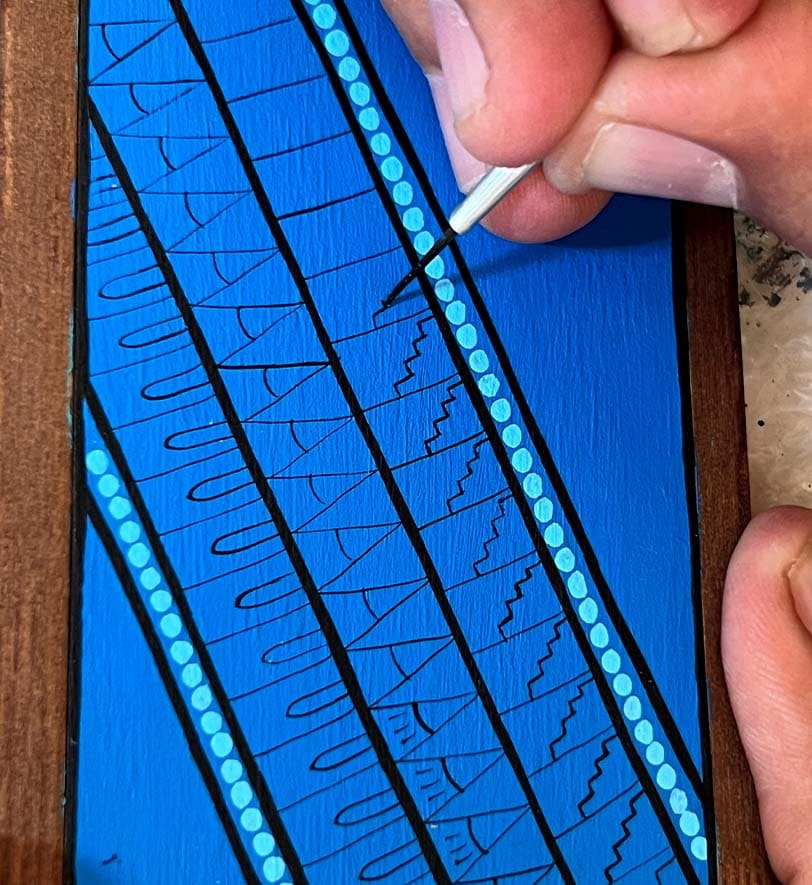History
In the 1930s, thanks to the work of the cartonero artist Pedro Linares, the production of alebrijes became consolidated as one of the iconic expressions of Mexican culture. It is said that the artist fell ill and, while in a deep fever-induced sleep, he dreamt of being in a forest filled with strange noises, emanating from extraordinary creatures that kept repeating a single word, "Alebrije."
It was the artisans from different parts of Mexico who employed their knowledge, continuing the creative expression in various techniques and designs. San Martin Tilcajete, Oaxaca stands out for its skilled artisan masters in the creation of alebrijes.
Process
Curing
The bark is carefully removed to allow artisans to apply different protective components that shield the wood from moisture.
Carving
Artisans skillfully carve the wood using manual tools, ensuring meticulous attention to detail in the finishing.
Painting
Drawing inspiration from their imagination, the artisans meticulously hand-paint each figure, imbuing every stroke with an iconographic significance derived from their culture.
The creation of each artwork can take more than a year of work (depending on its dimensions and details).

